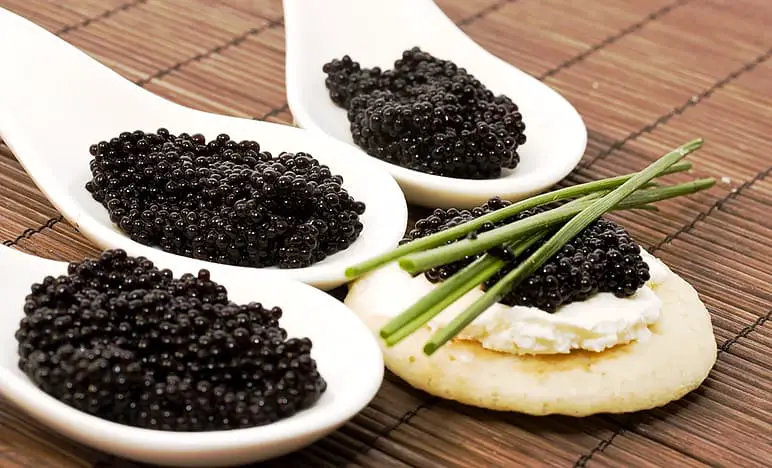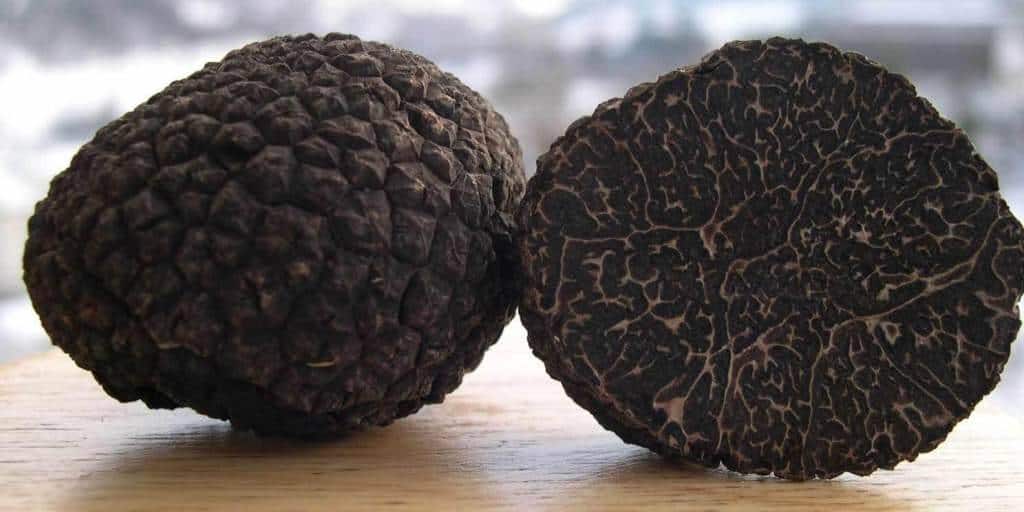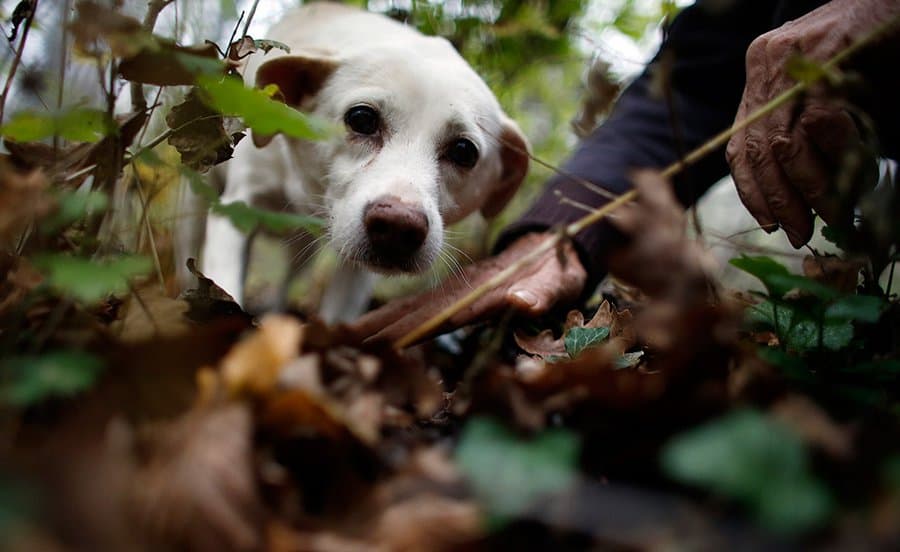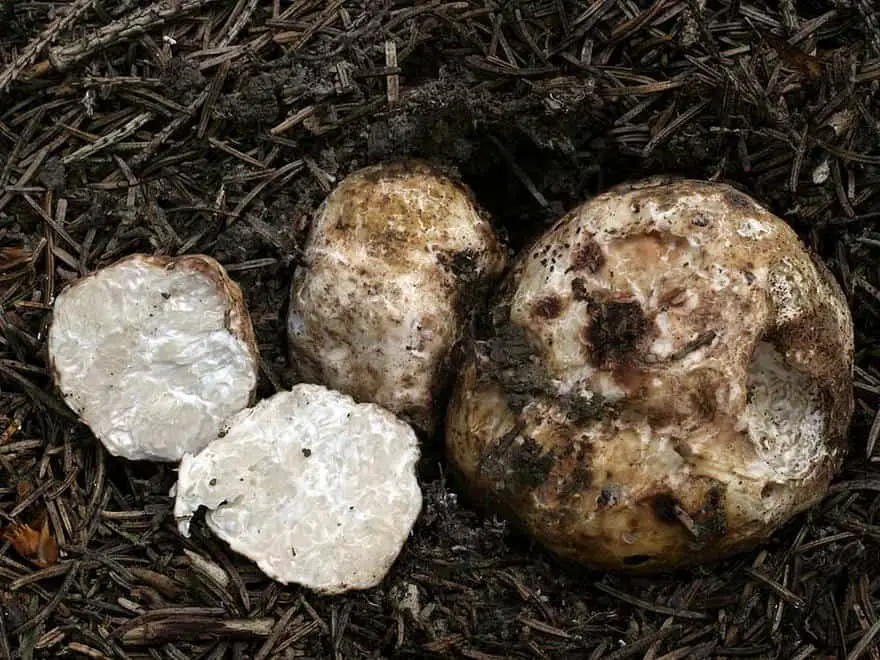Beluga caviar is the rarest and most expensive type of caviar. It is obtained from the sturgeon Huso huso. Not many people have a chance to try real Beluga caviar, so it would be interesting to know what it tastes like and whether it is worth buying.
What does Beluga caviar taste like? Beluga caviar has a delicate taste with a nutty aftertaste. Large eggs of light gray tones have a creamy aroma with a light taste of hazelnuts. A strong, bright fishy smell of Beluga caviar is a sign of fake or illegal caviar. The taste of real Beluga black caviar is gentle, slightly salted. An excess of salt and a pronounced bitter taste is a very bad sign.
Beluga caviar contains nutrient fats and proteins, trace elements, and vitamins — everything that allows the human body to develop normally. So regular consumption of a premium delicacy will have a positive effect on your well-being. The appetizing delicacy impresses with its composition and taste, but the cost is quite high. Always tasty, filling, and very useful – that’s what can be said about Beluga caviar.
Beluga caviar contains vitamins A, B, and D. Regular beluga caviar consumption normalizes blood pressure, the functioning of the digestive system increases the protective functions of the body.
Does beluga caviar taste good? Beluga caviar tastes very good. It has a unique, delicate hazelnut taste with a creamy aroma. High-quality Beluga caviar has a gentle, slightly salted taste and a very thin shell that melts in your mouth as you are eating it. Because of these taste qualities, gourmets all over the world are ready to pay a lot of money for Beluga caviar.
Quality black caviar has a very faint odor that most people hardly catch. A strong, bright fishy smell of Beluga caviar is a sign of fake or illegal caviar. The taste of real Beluga black caviar is gentle, and slightly salted. An excess of salt and a pronounced bitter taste is a very bad sign. The best Beluga caviar has a rich taste with a creamy, nutty flavor and no bitterness.

High-quality Beluga caviar is distinguished by shiny grains that do not stick together and are of the same size. It is not recommended to store it next to pungent-smelling foods so that it does not absorb foreign odors. Beluga caviar is easy to distinguish by the large size of the eggs — they can be up to 3.5 mm. The color of beluga caviar is not black but rather grayish-silver. The shell of beluga caviar is so thin that it literally melts in your mouth.
Sturgeons live long, for example, Beluga can live up to 100 years. Moreover, the older the fish, the more valuable and tasty its caviar is. Young fish under 20 years old give caviar of deep black color. After the fish turns 45, the color of the caviar changes to gray color. Once the fish is 85, the female lays eggs of a light shade with a golden tint. Accordingly, the price of caviar from “mature” fish is higher than from young ones.
The most expensive caviar is “golden”, from almost a 100-year-old old beluga. It is produced exclusively by the Iranian company House Almas. Only 10 kg of golden caviar is produced per year, it is packed in gold jars, and the cost is from $2500 per 100 g.
Black caviar is an expensive delicacy. As with any luxury item, caviar is often counterfeited or sold in poor quality at the price of the best varieties. An honest and trustworthy seller is the best guarantee that you will receive real premium caviar for your money. You should always ask the seller for the documents and certificates on the Beluga caviar.
Beluga Caviar Characteristics
Is Beluga caviar the best? Yes, Beluga caviar is the best and the most expensive. Beluga is an amazing fish that can reach huge sizes and live up to the age of 100 years. Beluga caviar belongs to the delicacies of the premium category due to its benefits and incredibly valuable taste. It has a pronounced nutty taste, which can be appreciated by all fans of unusual and useful delicacies.
Beluga is the largest of the sturgeon and was previously capable of reaching gigantic sizes — the body length was up to 6 m, the weight could exceed 600 kg. Today beluga is smaller. The life expectancy of individual representatives exceeds 100 years. Females mature at the age of 25 and do not lay eggs every year.
Beluga caviar is quite large and has a thin shell. Beluga eggs can be up to 3.5 mm. The shade can be light gray or almost black. Light seafood is more prized, but the darker delicacy tastes just as creamy and sophisticated. Beluga caviar can cost up to 2.5 thousand dollars per kg if the fish is mature. On average, the caviar of young Beluga costs 600$ per kg.
How to serve Beluga caviar? Beluga has a high-calorie content, therefore it is recommended to use it in small quantities as a snack to alcohol, for example, vodka or champagne.
Beluga caviar should be served on the table in special caviar bowls and as an independent dish since it absorbs foreign odors. It is better to eat it with silver spoons since the taste of the product deteriorates when it comes into contact with other metals.
Beluga Caviar Health Benefits
Is Beluga caviar good for you? Beluga caviar is good for you because it contains a huge amount of useful elements, including vitamins A, D, and E. Just one spoonful of Beluga caviar a day is enough to improve heart function and increase hemoglobin, prevent atherosclerosis, and improve brain function.
Besides, Beluga caviar helps to strengthen immunity and improve brain activity and mood, and the nervous system. Also, caviar improves eyesight, helps cleanse and rejuvenate skin and hair growth, strengthen nails, and reduce expression lines. The skin becomes hydrated and filled with nutrients, which promotes cell regeneration. Beluga caviar is used in luxury and elite cosmetics that help to rejuvenate the skin and improve hair condition.
In a word, Beluga caviar is priceless, and although its price is quite high, every person who dreams of health and longevity should at least periodically introduce beluga caviar into their diet.
How to Identify Good-Quality Beluga Caviar
When choosing Beluga caviar, pay attention to the eggs themselves since large, light eggs taste much more pleasant than dark and small ones. As for the advice of true gourmets, they can tell the difference between real and low-quality caviar in just a few moments. If caviar cannot be crushed by pressing the tongue against the palate, then it is either overripe or artificial since real beluga caviar practically melts in your mouth. Real caviar should roll on the plate if you blow on it.
Beluga caviar is used in cooking similarly to other types of caviar. Most often on holiday tables, beluga caviar can be seen as the main ingredient in tartlets or sandwiches, as well as in the form of a delicious snack. Beluga caviar is ideal for all kinds of simple appetizers, due to its taste, it does not require complex combinations. White bread, butter, and beluga caviar will be the best combination.
Beluga caviar will go well with champagne or vodka. This type of caviar is often used to make original and delicious sauces. Naturally, it is preferable to use granular caviar in its pure form. It is served in a non-metallic container, and champagne is considered an ideal accompaniment, chilled before serving.




